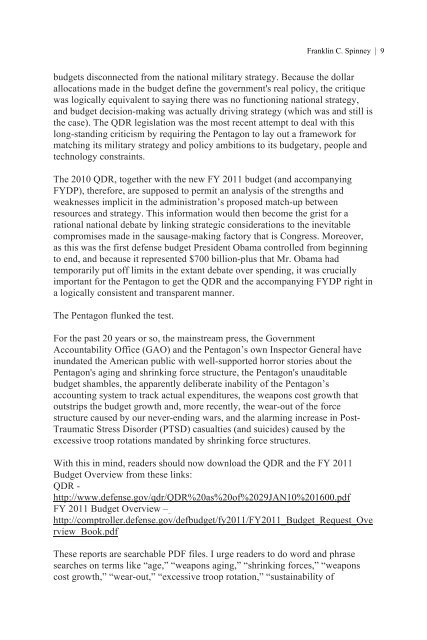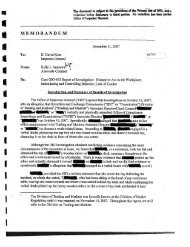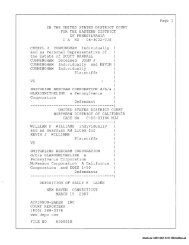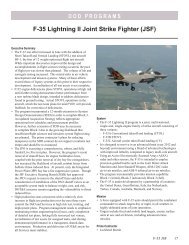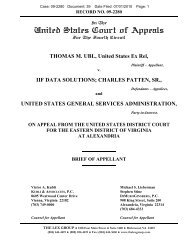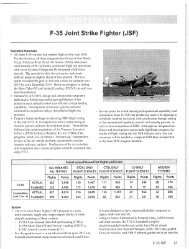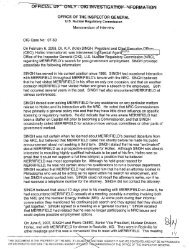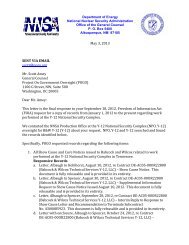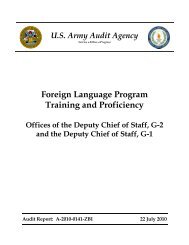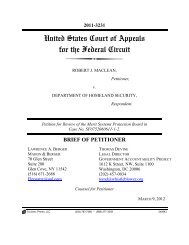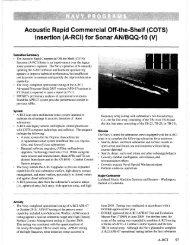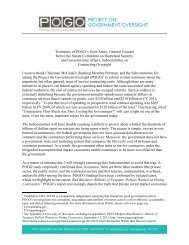The Pentagon Labyrinth
The Pentagon Labyrinth
The Pentagon Labyrinth
Create successful ePaper yourself
Turn your PDF publications into a flip-book with our unique Google optimized e-Paper software.
udgets disconnected from the national military strategy. Because the dollar<br />
allocations made in the budget define the government's real policy, the critique<br />
was logically equivalent to saying there was no functioning national strategy,<br />
and budget decision-making was actually driving strategy (which was and still is<br />
the case). <strong>The</strong> QDR legislation was the most recent attempt to deal with this<br />
long-standing criticism by requiring the <strong>Pentagon</strong> to lay out a framework for<br />
matching its military strategy and policy ambitions to its budgetary, people and<br />
technology constraints.<br />
<strong>The</strong> 2010 QDR, together with the new FY 2011 budget (and accompanying<br />
FYDP), therefore, are supposed to permit an analysis of the strengths and<br />
weaknesses implicit in the administration’s proposed match-up between<br />
resources and strategy. This information would then become the grist for a<br />
rational national debate by linking strategic considerations to the inevitable<br />
compromises made in the sausage-making factory that is Congress. Moreover,<br />
as this was the first defense budget President Obama controlled from beginning<br />
to end, and because it represented $700 billion-plus that Mr. Obama had<br />
temporarily put off limits in the extant debate over spending, it was crucially<br />
important for the <strong>Pentagon</strong> to get the QDR and the accompanying FYDP right in<br />
a logically consistent and transparent manner.<br />
<strong>The</strong> <strong>Pentagon</strong> flunked the test.<br />
Franklin C. Spinney | 9<br />
For the past 20 years or so, the mainstream press, the Government<br />
Accountability Office (GAO) and the <strong>Pentagon</strong>’s own Inspector General have<br />
inundated the American public with well-supported horror stories about the<br />
<strong>Pentagon</strong>'s aging and shrinking force structure, the <strong>Pentagon</strong>'s unauditable<br />
budget shambles, the apparently deliberate inability of the <strong>Pentagon</strong>’s<br />
accounting system to track actual expenditures, the weapons cost growth that<br />
outstrips the budget growth and, more recently, the wear-out of the force<br />
structure caused by our never-ending wars, and the alarming increase in Post-<br />
Traumatic Stress Disorder (PTSD) casualties (and suicides) caused by the<br />
excessive troop rotations mandated by shrinking force structures.<br />
With this in mind, readers should now download the QDR and the FY 2011<br />
Budget Overview from these links:<br />
QDR -<br />
http://www.defense.gov/qdr/QDR%20as%20of%2029JAN10%201600.pdf<br />
FY 2011 Budget Overview –<br />
http://comptroller.defense.gov/defbudget/fy2011/FY2011_Budget_Request_Ove<br />
rview_Book.pdf<br />
<strong>The</strong>se reports are searchable PDF files. I urge readers to do word and phrase<br />
searches on terms like “age,” “weapons aging,” “shrinking forces,” “weapons<br />
cost growth,” “wear-out,” “excessive troop rotation,” “sustainability of


